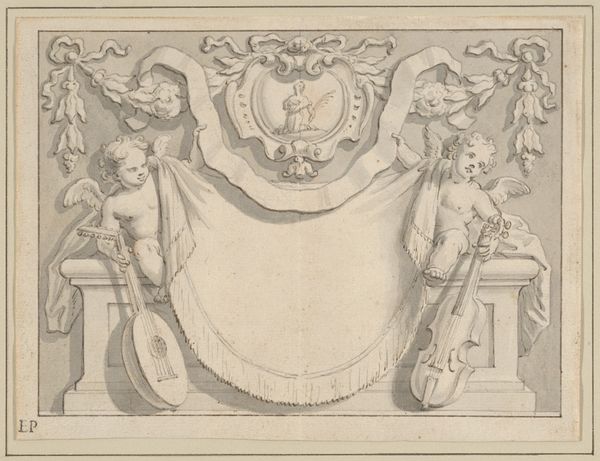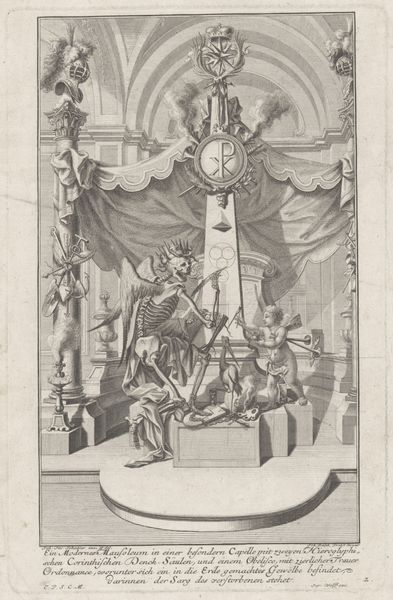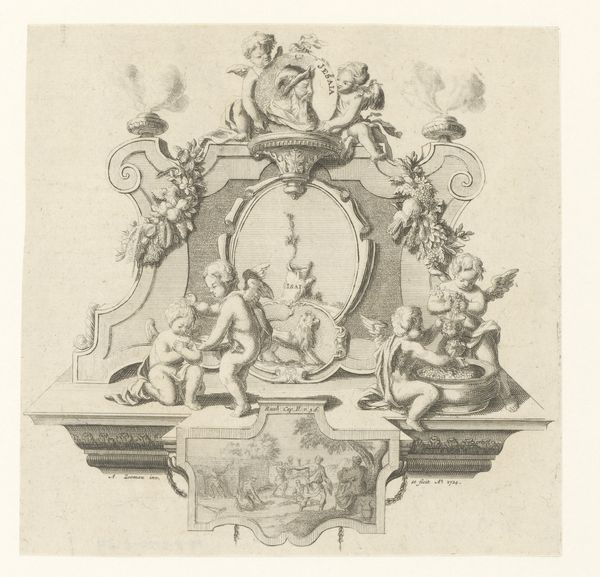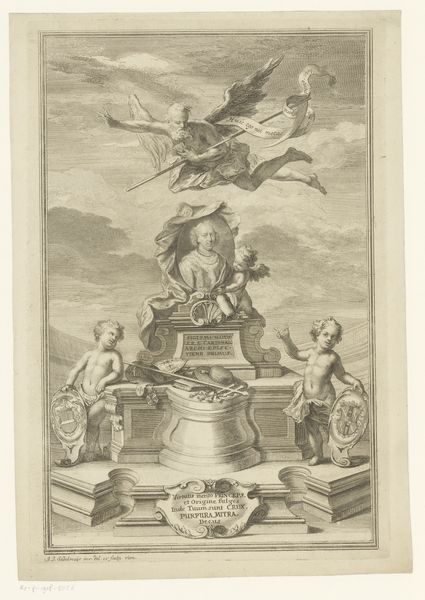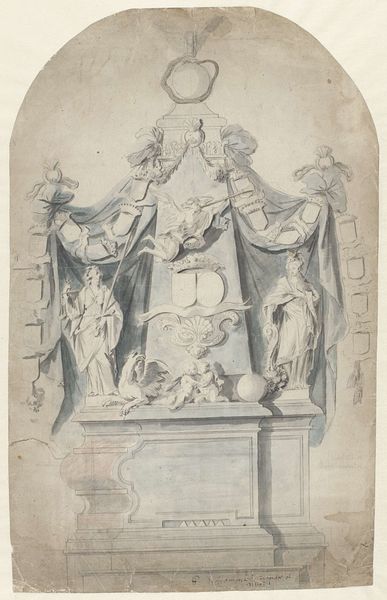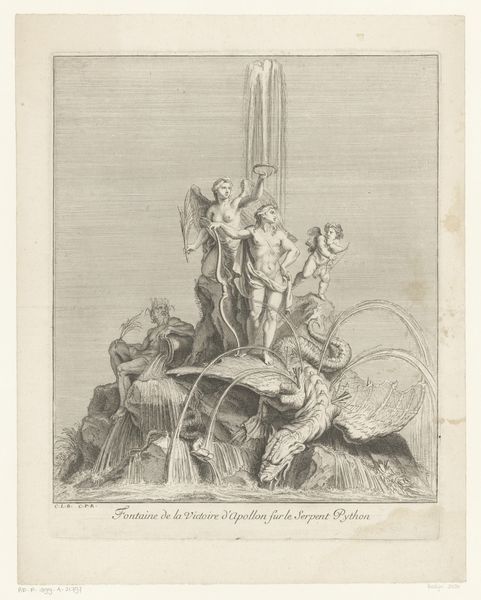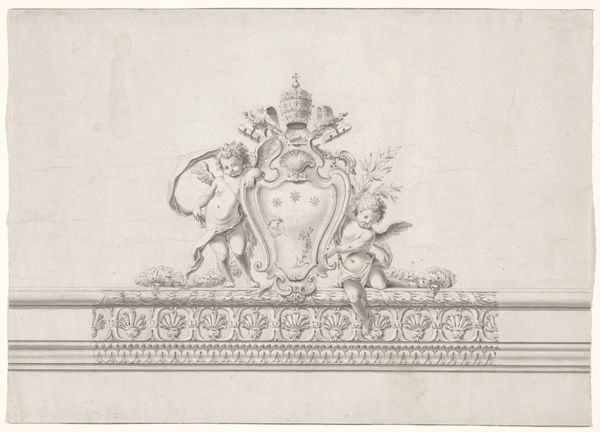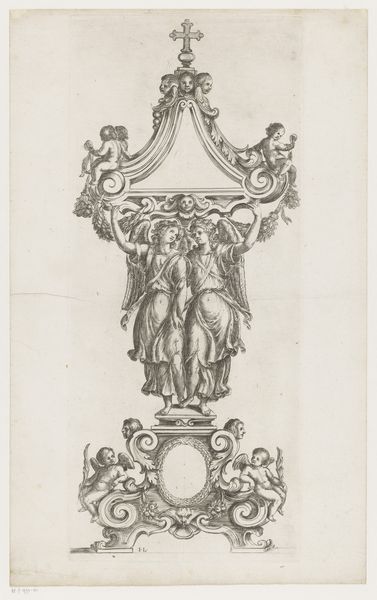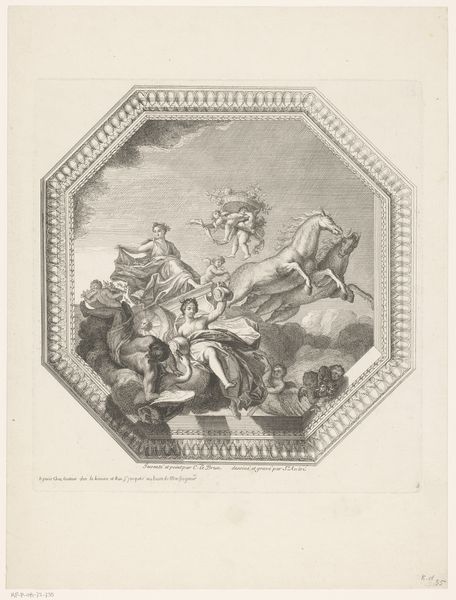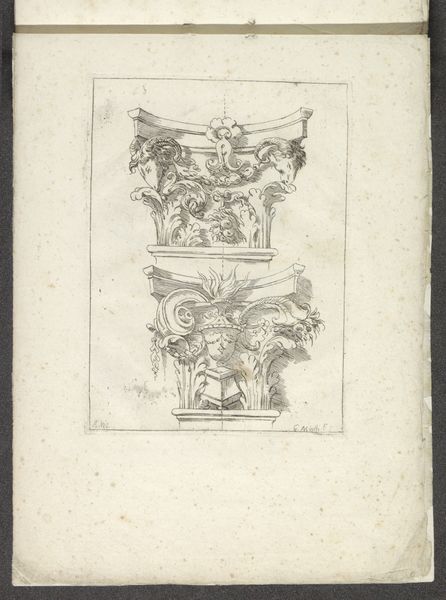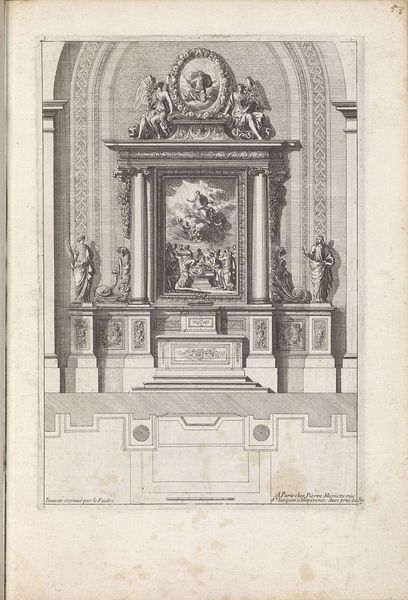
Deel van een plafondschildering met twee naakte mannenfiguren 1679 - 1728
0:00
0:00
drawing, pencil
#
drawing
#
allegory
#
baroque
#
figuration
#
pencil
#
history-painting
Dimensions: height 472 mm, width 300 mm
Copyright: Rijks Museum: Open Domain
Curator: I find myself captivated by this fragment of a ceiling painting, dating from 1679 to 1728. It's attributed to Jean-Baptiste de Poilly and rendered meticulously in pencil. My first thought is "grandeur meets fragility." Editor: My initial impression is how much it feels like an act of labor, the intricacy of detail almost painful to imagine executing. There's a real physicality communicated even through the delicate lines. Curator: It's intriguing how de Poilly manages to convey Baroque dynamism with such restrained means. You have these muscular male figures—presumably allegorical—supporting the architectural framework with evident strain. It makes one wonder about the power structures it aims to portray. Editor: Exactly! The depiction of these male figures – seemingly forced into labor – immediately provokes considerations about social class and what labor practices are being monumentalized within spaces for wealthy consumers. The piece feels imbued with subtle class tension; you have wealth made possible by bodies put to work in uncomfortable ways. Curator: I agree; the inherent tension underscores the construction of power. But look closely at the heraldic symbols intertwined with laurel wreaths— these decorative motifs not only signal nobility but likely indicate a patron's identity as well. The artistic choices reflect very directly what mattered materially to those in power at the time. Editor: Yes, but what is deliberately absent? De Poilly’s focus directs our eye towards the spectacle of masculinity, while ignoring women who were, in many cases, performing other domestic kinds of labor or participating more directly within visual culture. Those omissions create a palpable imbalance we ought to address directly. Curator: A strong and valid point. I think focusing on the material reality of pencil drawing, the labor involved in production, brings nuance to readings centered on more figurative analysis. Together, it opens new perspectives. Editor: I concur; that intersection between production and ideology offers much needed insights to a new generation of scholars.
Comments
No comments
Be the first to comment and join the conversation on the ultimate creative platform.

